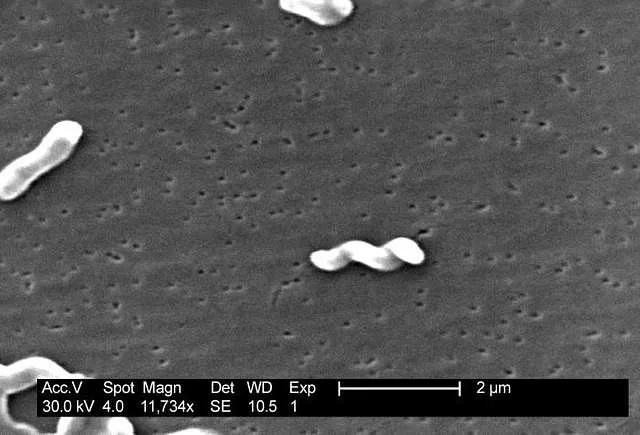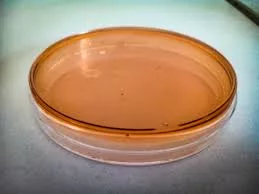Campylobacteriosis or campylobacter infection is a diarrheal illness caused by bacteria from the Campylobacter species. It’s the most common cause of diarrhea worldwide,1World Health Organization: WHO. (2020, May 1). Campylobacter. https://www.who.int/news-room/fact-sheets/detail/campylobacter as well as in the United States,2Campylobacteriosis | CDC Yellow Book 2024. (n.d.). CDC.gov. https://wwwnc.cdc.gov/travel/yellowbook/2024/infections-diseases/campylobacteriosis with socio-economic burden rising to several billion dollars every year.3Heimesaat, M. M., Backert, S., Alter, T., & Bereswill, S. (2021). Human Campylobacteriosis—A serious infectious threat in a one health perspective. Current Topics in Microbiology and Immunology, 1–23. https://doi.org/10.1007/978-3-030-65481-8_1 While the majority of the cases are self-limiting, Campylobacteriosis might become deadly in immunocompromised individuals. Understanding its transmission, clinical presentation, and management is essential for early diagnosis and appropriate intervention.

Causes of Campylobacteriosis
Campylobacteriosis is caused by Campylobacter–a group or genus of spiral-shaped, S-shaped, or comma-shaped gram-negative bacteria, that is commonly found in the gut of several farm animals such as poultry, cattle, and pigs. They are transmitted to humans via unpasteurized milk or the excreta of these hosts. Scientists have identified more than 20 species of this genus. The popular ones, that commonly cause illness in humans are: C. jejuni, C. coli, and C. fetus. Amongst these, C. jejuni is the most common culprit of diarrheal illness. The other species are more involved in causing widespread bacterial infection with systemic manifestations, especially in immunocompromised or previously unhealthy individuals.
How is Campylobacteriosis Transmitted?
Campylobacteriosis is transmitted from carrier animals to humans via these routes:
Fecal-Oral:
Farm animals and poultry that normally have these bacteria in their gut, shed them in their feces. If humans ingest any food or milk contaminated with these feces, they are likely to contract campylobacteriosis. This is the fecal-oral route of transmission and it’s the most common one.
Person-to-Person Sexual Contact:
Although rare, Campylobacter can be transmitted between people through fecal-oral contact, such as during sexual activity. This has been reported in some cases among men who have sex with men (MSM). However, it’s not a common route of transmission since a relatively large number of bacteria—around 1,000 to 10,000—are needed to cause infection.4Bush, L. M., & Vazquez-Pertejo, M. T. (2024b, June 5). Campylobacter Infections. Merck Manual Professional Edition. https://www.merckmanuals.com/professional/infectious-diseases/gram-negative-bacilli/campylobacter-infections
Foodborne:
It involves the transmission of bacteria via the consumption of unpasteurized milk, undercooked meat, and raw poultry products.
Waterborne:
Transmission can also occur via water sources contaminated by carrier animal feces.
Occupational Exposure:
Vets, farmers, and workers in the fishing or forestry industry who deal with carrier animals routinely may get this illness through occupational exposure.5World Health Organization: WHO. (2020, May 1). Campylobacter. https://www.who.int/news-room/fact-sheets/detail/campylobacter
What happens in Campylobacteriosis?
In Campylobacteriosis, the bacteria most commonly enter the human body through the oral route. Then, they travel down the alimentary canal towards the intestines. Once in the intestines, using their flagella they bind to the epithelial cells there, invade and destroy them. Our bodies also retaliate–they send numerous white blood cells to fight back and destroy the intruder. This battle causes pain, swelling, and the symptoms of food poisoning such as loose stools, cramps, and fever.
Some strains also release a toxin similar to that of cholera, causing similar watery diarrhea. Other strains may also produce other types of toxins that can cause inflammation, consequent ulcers, and bloody diarrhea.
How common is Campylobacteriosis?
According to the WHO fact sheet, Campylobacteriosis is one of 4 key global causes of diarrheal disease, and the most common bacterial cause worldwide.6World Health Organization: WHO. (2020, May 1). Campylobacter. https://www.who.int/news-room/fact-sheets/detail/campylobacter. Centers for Disease Control and Prevention (CDC) estimates that 1.5 million people in the United States get ill from Campylobacter every year, despite the significant underreporting and underdiagnosis.7About Campylobacter infection. (2024, May 10). Campylobacter Infection (Campylobacteriosis). https://www.cdc.gov/campylobacter/about/index.html
While exact figures are not yet available, epidemiologists estimate the incidence in developed countries between 4.4 to 9.3 per 1000 population.8 World Health Organization, Food and Agriculture Organization of the United Nations, World Organisation for Animal Health, Endtz, H., Havelaar, A. H., French, N., Hofacre, C. L., Tauxe, R., Lake, R., Baker, M., Biggs, R., Brooks, M., Campbell, D., Cartagena, P., Duncan, G., Fitzgerald, C., Hathaway, S., Horn, B., Hudson, A., . . . Wong, T. (2013). THE GLOBAL VIEW OF CAMPYLOBACTERIOSIS.
According to UK-based studies, five hundred thousand people get sick each year, out of which 91% of cases are attributed to C. jejuni and the remaining 8% to C. coli.9Levels and trends of antimicrobial resistance in Campylobacter spp. from chicken in the UK. (n.d.). Food Standards Agency. https://www.food.gov.uk/research/levels-and-trends-of-antimicrobial-resistance-in-campylobacter-spp-from-chicken-in-the-uk
Who is most at risk of Campylobacteriosis?
Even though campylobacteriosis can affect anybody regardless of their age group, race or ethnicity, the following are more vulnerable to get it:
- Children younger than 5, and adults between 15-29 years10Same, R. G., & Tamma, P. D. (2018). Campylobacter Infections in Children. Pediatrics in Review, 39(11), 533–541. https://doi.org/10.1542/pir.2017-0285
- People with a weakened immune system, such as diabetics, HIV patients, or candidates for organ transplantation.
- Travelers
- People who live or work with animals
- Homosexual men
- People on antacids – Campylobacteriosis is sensitive to stomach acid. This is why people on antacids who have low to no acid production are more at risk.
Is Campylobacteriosis Contagious?
Yes, Campylobacteriosis is contagious. You can get it from someone who has had it, as the infected continuously secrete the bacteria in their poop. But transmission between humans is rare. You are more prone to get it from animals, an untreated water supply, or undercooked animal or poultry products.
Symptoms of Campylobacteriosis
Campylobacteriosis can present with asymptomatic illness, gastrointestinal manifestations, or even life-threatening systemic symptoms.
Prodrome:
The illness starts with an incubation period of 7-10 days. It’s followed by a brief period of:
- Fever
- Body aches
- Headache
These symptoms typically last for 24 hours.
Characteristic Symptoms:
After this, the characteristic symptoms start appearing such as:
- Abdominal pain: It’s crampy in the majority of cases. You may feel it in the lower right quadrant of your abdomen, like the pain of appendicitis.
- Fever: Up to 40 degrees Celsius, might persist for a week
- Loose stools: Patients usually report around 10 episodes of mostly watery and occasionally bloody diarrhea every day.
- Vomiting: If you have vomiting, along with bloody diarrhea and cramps, your symptoms might take longer to settle, and may even require in-hospital management.
- Tenesmus: It is the sudden (and generally painful) urge to pass stools. A quarter of the patients report this symptom.
Signs of Dehydration:
Due to the high frequency of loose stools, patients get dehydrated quickly. Therefore, it is important to know and identify the signs of dehydration in the affected individuals. These include:
- Thirst
- Dry lips and mouth
- Dark urine
- Less frequent urination
- Dizziness & fatigue
- Sunken eyes, fainting, rapid breathing, and a racing heart in case of severe dehydration–this state needs immediate, intravenous fluid management.
Systemic Symptoms:
Apart from the enteric manifestations, some individuals also develop systemic symptoms. This happens in the elderly or the immunocompromised who contract Campylobacter fetus infections.11Donner, V., Croxatto, A., & Tissot, F. (2021). Infections invasives à Campylobacter [Invasive Campylobacter infections]. Revue medicale suisse, 17(734), 722–725.
The systemic symptoms include:
- Bacteremia: It’s when you have bacteria in your bloodstream.
- Meningitis: It’s the inflammation of the membranes that surround the brain and the spinal cord.12van Samkar, A., Brouwer, M. C., van der Ende, A., & van de Beek, D. (2016). Campylobacter Fetus Meningitis in Adults: Report of 2 Cases and Review of the Literature. Medicine, 95(8), e2858. https://doi.org/10.1097/MD.0000000000002858
- Vascular infections
- Thrombophlebitis: It’s the inflammation of a vein, often accompanied by the presence of blood clots
- Cellulitis: It’s when bacteria infect the deeper layers of your skin.13Ausselet, N., Huang, D., Vandercam, B., & Yombi, J. C. (2009). Campylobacter fetus cellulitis in an immunocompromised patient: case report and review of the literature. Acta clinica Belgica, 64(4), 346–348. https://doi.org/10.1179/acb.2009.055
- Peritonitis: It’s the inflammation of the lining of your abdomen (called the peritoneum).
While a majority of Campylobacter infections resolve on their own, those with systemic manifestations tend to aggravate quickly and may become life-threatening.
Differential Diagnosis
The differential diagnosis for Campylobacteriosis includes:
- Other causes of bacterial gastroenteritis, such as Salmonella or Shigella: These disorders present with similar symptoms like bloody diarrhea, abdominal cramps, fever, and nausea, but the duration of symptoms is shorter than that in Campylobacteriosis. Doctors rule them out by identifying specific bacteria in stool culture or a PCR test. Also, there is a positive travel history to endemic areas in Shigellosis, which is usually absent in Campylobacteriosis.
- Viral Gastroenteritis e.g. Norovirus: It resembles Campylobacteriosis in symptoms and transmission. However, stool culture in case of viral illness does not yield any growth, helping doctors rule it out.
- Parasitic Infections such as Giardiasis: It also presents with loose stools, fever, vomiting, and abdominal pain, but the specifications of diarrhea differ in Giardiasis. For example, there is foul-smelling, greasy, non-bloody diarrhea in Giardia infestation, in contrast to the bloody, non-greasy stools of Campylobacter. It’s diagnosed by a stool ova and cyst test which identifies the presence of parasitic ova (eggs) in a given stool sample. It’s treated by anti-parasitic medication instead of the conventional antibiotic choice in Campylobacter.
- Inflammatory Bowel Disease (IBD): Campylobacter and IBD overlap in terms of systemic symptoms (like joint pains and fever), and, the presence of bloody diarrhea. Doctors distinguish campylobacteriosis from IBD through stool cultures, endoscopy, symptom duration, and inflammatory markers in the blood.
How is Campylobacteriosis Diagnosed?
Doctors establish the diagnosis of campylobacteriosis by identifying the pathogen and ruling out other infections that may present similarly.
The common laboratory tests include:
Stool Culture:

It is the gold standard investigation. Microbiologists use a sample from your poop to grow the bacteria on a unique medium, at specific temperatures. This helps identify if Campylobacter is the causative organism or not. It also helps isolate which species of Campylobacter is causing the illness. The only downside of this investigation is that it takes days to deliver results.
Rapid Antigen Tests:
These tests provide results faster than a culture. The popular ones are: Polymerase chain reaction (PCR) to detect genetic material in stool samples, and, Enzyme-linked Immunoassay (ELISA) which identifies bacterial antigens in a given specimen.
Blood Cultures:
In case of systemic symptoms, your doctor might also suggest a blood culture to look for bacteria in the blood.
What is the treatment for Campylobacteriosis?
Most Campylobacter enteric infections are self-limiting, and the mainstay of treatment is restoring hydration.14Bush, L. M., & Vazquez-Pertejo, M. T. (2024, June 5). Campylobacter Infections. Merck Manual Professional Edition. https://www.merckmanuals.com/professional/infectious-diseases/gram-negative-bacilli/campylobacter-infections In systemic illnesses, antibiotics may be required.
Fluid Management
People with campylobacteriosis are at risk for dehydration due to the high frequency and volume of loose stools. For this reason, doctors advise them to drink plenty of fluids, especially fluids with oral rehydration salt. If there is severe dehydration and you aren’t able to consume fluids orally, then you might need fluid replacement through the intravenous route.
Medication
Generally, enteric infections resolve on their own, and even antibiotic prophylaxis is not recommended. But if there is risk or evidence of systemic illness, your doctor may advise antibiotics. The treatment of choice is oral Azithromycin 500mg per day for 3 days. For children and pregnant women, Erythromycin is another safe choice. Doctors usually avoid Ciprofloxacin and other quinolones due to the emergence of resistant strains.15Hannula, M., & Hänninen, M. L. (2008). Effects of low-level ciprofloxacin challenge in the in vitro development of ciprofloxacin resistance in Campylobacter jejuni. Microbial drug resistance (Larchmont, N.Y.), 14(3), 197–201. https://doi.org/10.1089/mdr.2008.0833
For rare complications like meningitis, more potent antibiotics such as carbapenems may be necessary, though this is very uncommon.
Consultations
If complications occur, appropriate referrals should be made—for instance, to surgery for toxic megacolon or to neurology in cases involving neurological symptoms like those seen in Guillain-Barré syndrome or meningitis.
When to seek medical help?
You should seek immediate medical help if you or someone you know has:
- Signs of severe dehydration, e.g. dizziness, decreased urination.
- Persistent high fever
- Symptoms lasting more than ten days
- Or if the patient belongs to a high-risk group (infants, elderly, immunocompromised)
Prognosis & Recovery
Most individuals with Campylobacteriosis recover on their own within a week, with characteristic gastrointestinal symptoms typically resolving during this time. However, symptoms such as fatigue and mild abdominal discomfort may sometimes persist for a few weeks. Additionally, immunocompromised individuals or those at the extremes of age may develop complications that extend the usual course of the disease. These patients also require appropriate medical attention.
Factors that affect prognosis are:
- Patient health: People with a stronger immune system tend to recover quicker than those with a weaker immunity.
- Prompt treatment: seeking medical care such as fluid replacement and appropriate antibiotic management (when required) shortens the duration of illness and the likelihood of complications.
- Bacterial strains: Infections due to C. fetus tend to have a longer and more severe course of illness as compared to C. jejuni infections.
Complications of Campylobacteriosis
Complications of campylobacteriosis are:
Reactive Arthritis:
It’s the pain and inflammation of your joints secondary to a bacterial infection elsewhere.
Guillain-Barré Syndrome:
It’s a rare condition in which the body’s immune response attacks the peripheral nerves, causing numbness, weakness, or paralysis. In some cases of campylobacteriosis, our immune system while fighting the bacteria, misidentifies nerve cells due to their similar surface structures and mistakenly attacks them, triggering GBS.
Irritable Bowel Syndrome:
It’s a common digestive issue involving abdominal pain and alternating episodes of constipation and diarrhea.
Toxic Megacolon:
Toxic megacolon is a rare yet life-threatening complication of campylobacteriosis in which our colon gets intensely inflamed, leading to bowel paralysis and massive dilation of the colon.
Sepsis:
it’s a medical emergency. Don’t delay seeking medical attention if you develop any sign of sepsis such as high-grade fever, tachycardia, shortness of breath, or cognitive confusion.
How to prevent Campylobacteriosis?
Currently, there is no vaccine readily available for Campylobacteriosis. The prevention is based on breaking the chain of transmission, through measures such as:
- Avoid consuming raw eggs, poultry products, and uncooked or undercooked beef.
- Make sure you consume properly pasteurized milk and chlorinated water.
- Use separate cutting boards for products of animal and plant origin to minimize transmission. Also, ensure proper cleaning of kitchen countertops and utensils after handling products of animal origin.
- Training kitchen staff and healthcare workers about proper food handling techniques also helps prevent Campylobacteriosis.
- Wash your hands after touching your pets, feeding them, touching their things, and cleaning them up.
- If you have campylobacteriosis, remember you stay infected for up to 3 weeks even after your loose stools subside. So, continue practicing these preventative measures to protect others.
Take-Home Message
Campylobacteriosis is the leading bacterial cause of diarrhea worldwide. Symptoms include watery diarrhea, cramps, and fever. Diagnosis is established by clinical evaluation and microbiological isolation of Campylobacter species. The mainstay of treatment is rehydration. Antibiotics are occasionally recommended. While the prognosis is generally good, with symptoms resolving on their own with supportive care, the immunocompromised are at risk of widespread bacteremia and consequent life-threatening complications. This underscores the importance of accurate diagnosis and timely management to prevent serious outcomes.
Refrences
- 1World Health Organization: WHO. (2020, May 1). Campylobacter. https://www.who.int/news-room/fact-sheets/detail/campylobacter
- 2Campylobacteriosis | CDC Yellow Book 2024. (n.d.). CDC.gov. https://wwwnc.cdc.gov/travel/yellowbook/2024/infections-diseases/campylobacteriosis
- 3Heimesaat, M. M., Backert, S., Alter, T., & Bereswill, S. (2021). Human Campylobacteriosis—A serious infectious threat in a one health perspective. Current Topics in Microbiology and Immunology, 1–23. https://doi.org/10.1007/978-3-030-65481-8_1
- 4Bush, L. M., & Vazquez-Pertejo, M. T. (2024b, June 5). Campylobacter Infections. Merck Manual Professional Edition. https://www.merckmanuals.com/professional/infectious-diseases/gram-negative-bacilli/campylobacter-infections
- 5World Health Organization: WHO. (2020, May 1). Campylobacter. https://www.who.int/news-room/fact-sheets/detail/campylobacter
- 6World Health Organization: WHO. (2020, May 1). Campylobacter. https://www.who.int/news-room/fact-sheets/detail/campylobacter.
- 7About Campylobacter infection. (2024, May 10). Campylobacter Infection (Campylobacteriosis). https://www.cdc.gov/campylobacter/about/index.html
- 8World Health Organization, Food and Agriculture Organization of the United Nations, World Organisation for Animal Health, Endtz, H., Havelaar, A. H., French, N., Hofacre, C. L., Tauxe, R., Lake, R., Baker, M., Biggs, R., Brooks, M., Campbell, D., Cartagena, P., Duncan, G., Fitzgerald, C., Hathaway, S., Horn, B., Hudson, A., . . . Wong, T. (2013). THE GLOBAL VIEW OF CAMPYLOBACTERIOSIS.
- 9Levels and trends of antimicrobial resistance in Campylobacter spp. from chicken in the UK. (n.d.). Food Standards Agency. https://www.food.gov.uk/research/levels-and-trends-of-antimicrobial-resistance-in-campylobacter-spp-from-chicken-in-the-uk
- 10Same, R. G., & Tamma, P. D. (2018). Campylobacter Infections in Children. Pediatrics in Review, 39(11), 533–541. https://doi.org/10.1542/pir.2017-0285
- 11Donner, V., Croxatto, A., & Tissot, F. (2021). Infections invasives à Campylobacter [Invasive Campylobacter infections]. Revue medicale suisse, 17(734), 722–725.
- 12van Samkar, A., Brouwer, M. C., van der Ende, A., & van de Beek, D. (2016). Campylobacter Fetus Meningitis in Adults: Report of 2 Cases and Review of the Literature. Medicine, 95(8), e2858. https://doi.org/10.1097/MD.0000000000002858
- 13Ausselet, N., Huang, D., Vandercam, B., & Yombi, J. C. (2009). Campylobacter fetus cellulitis in an immunocompromised patient: case report and review of the literature. Acta clinica Belgica, 64(4), 346–348. https://doi.org/10.1179/acb.2009.055
- 14Bush, L. M., & Vazquez-Pertejo, M. T. (2024, June 5). Campylobacter Infections. Merck Manual Professional Edition. https://www.merckmanuals.com/professional/infectious-diseases/gram-negative-bacilli/campylobacter-infections
- 15Hannula, M., & Hänninen, M. L. (2008). Effects of low-level ciprofloxacin challenge in the in vitro development of ciprofloxacin resistance in Campylobacter jejuni. Microbial drug resistance (Larchmont, N.Y.), 14(3), 197–201. https://doi.org/10.1089/mdr.2008.0833

